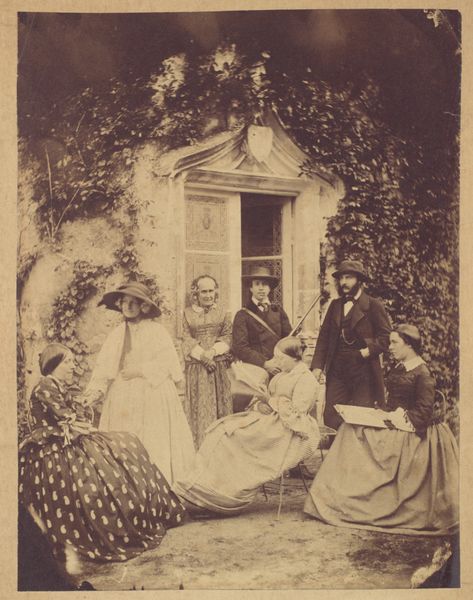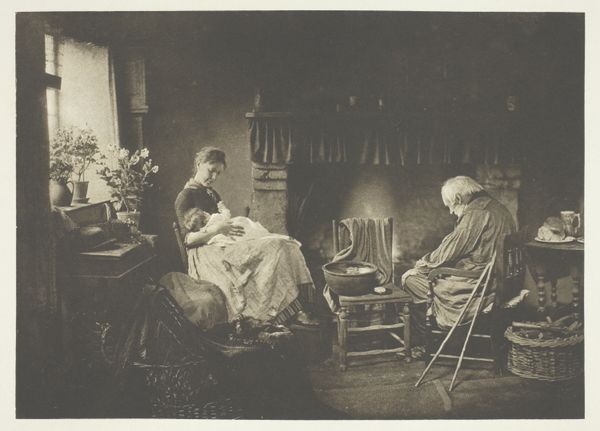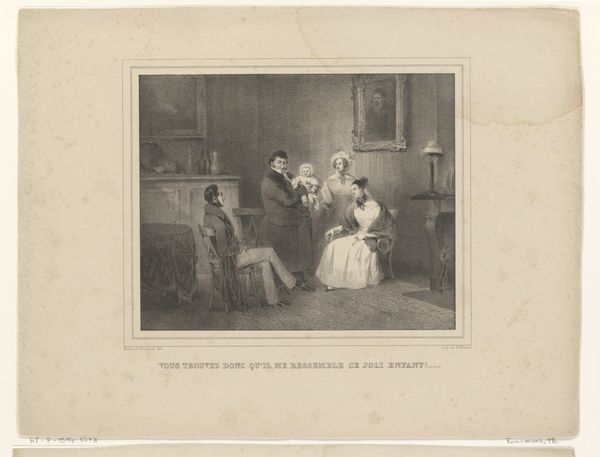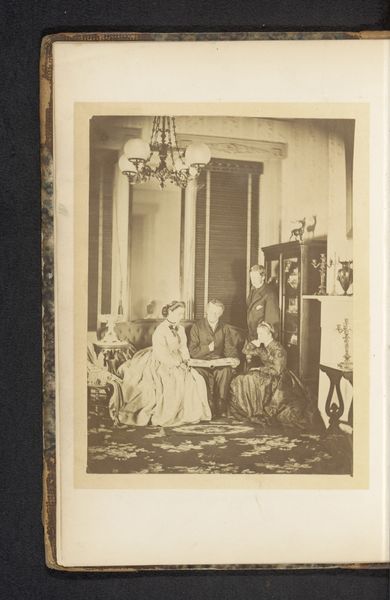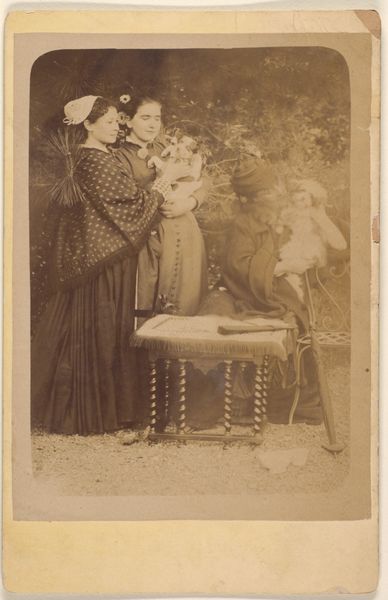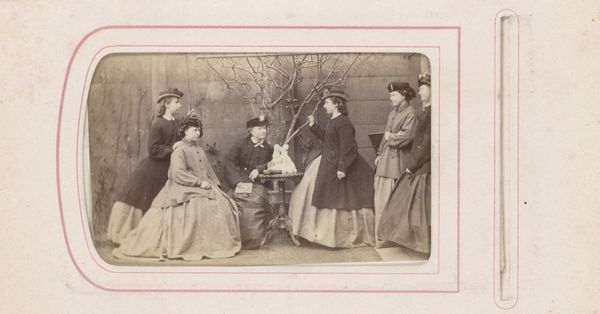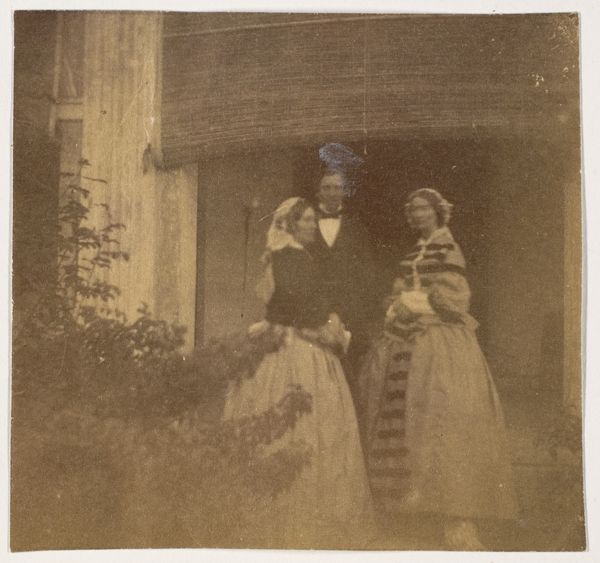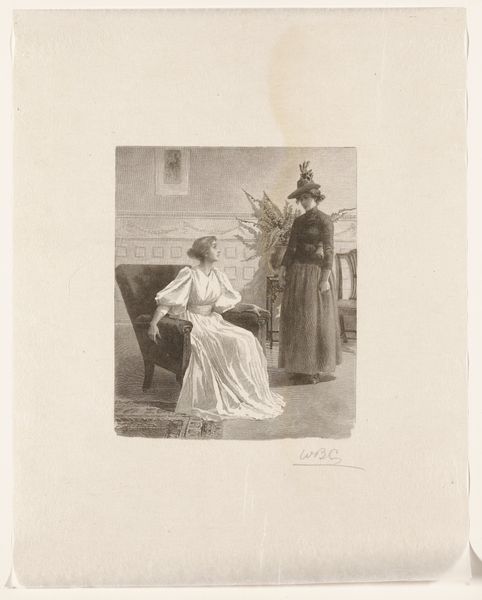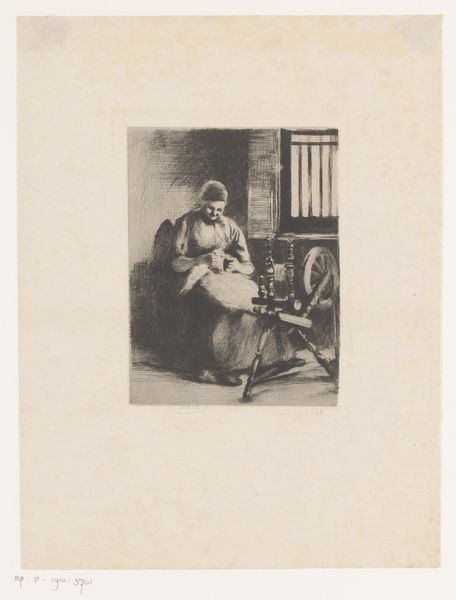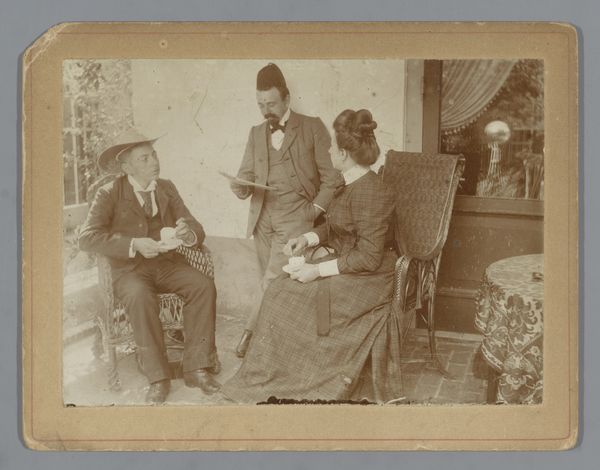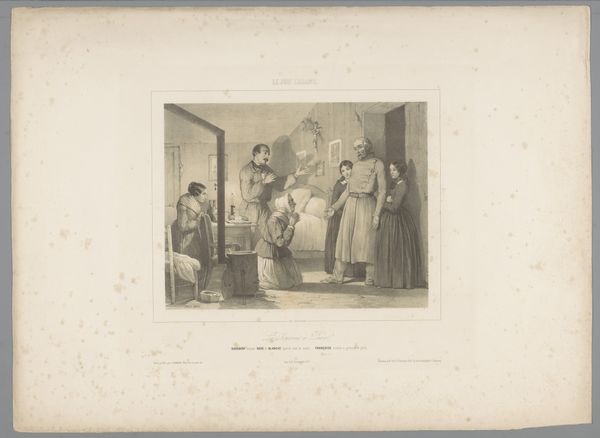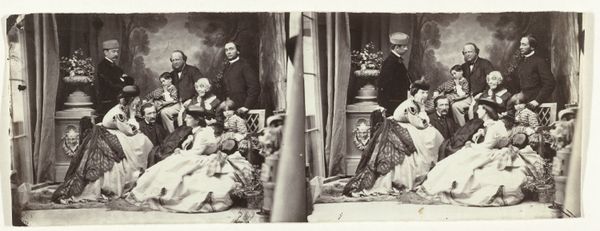
photography, gelatin-silver-print
#
portrait
#
16_19th-century
#
archive photography
#
photography
#
historical photography
#
gelatin-silver-print
#
genre-painting
#
realism
Dimensions: 11.2 × 8.7 cm (image/paper); 27.6 × 21.3 cm (page/mount)
Copyright: Public Domain
Editor: So, we're looking at "Old Furniture," a gelatin-silver print made in 1881 by John Thomson. The photograph shows three people in front of a shop overflowing with goods. It's quite a striking image—there's a feeling of everyday life being played out in a public space. What strikes you about this piece? Curator: What's compelling to me is not just the *what*, but *how* it's made, and *why* Thomson chose to represent this particular scene at this moment in time. The gelatin-silver process itself—how does it relate to mass production and the democratisation of images? Before this, we had daguerreotypes, more singular and unique. This allowed multiple prints to be made, rapidly changing accessibility to photography and impacting culture. Editor: That makes a lot of sense. It feels like a deliberate capturing of a specific, perhaps disappearing, way of life. Curator: Exactly. And look at *what* is being documented. Thomson isn't photographing the nobility, but a second-hand shop with 'old furniture.' Think about what it represents – a pre-industrial mode of exchange now shifting amidst larger consumerist trends. Who are these people buying and selling these things? This work gives space and weight to what the average working person might own, purchase, or hope to possess. The act of making images, or creating images, and recording such an ordinary moment makes this quite interesting in regards to the history of consumerism and mass media. Editor: So, the photograph itself, the materials and the choices of subject matter… it all speaks to the beginnings of a modern consumer culture? Curator: Precisely. We can consider what photography meant to Victorian society at the time it was made, or its cultural implications across the centuries, but even at face value we begin to examine the beginnings of new global trends in the work being made at the time, while still taking note of local commerce and its presence even in urban spaces. Editor: I've never considered approaching photography quite this way before! It’s shifted my perspective a bit. Thanks for this! Curator: Of course! I am happy to have helped shed light on Thomson’s approach.
Comments
No comments
Be the first to comment and join the conversation on the ultimate creative platform.
